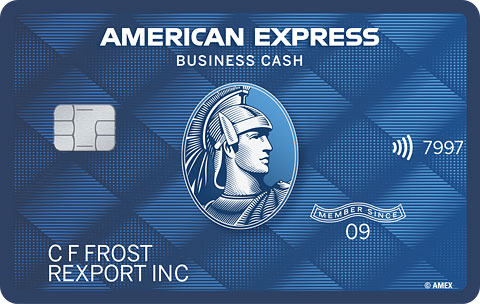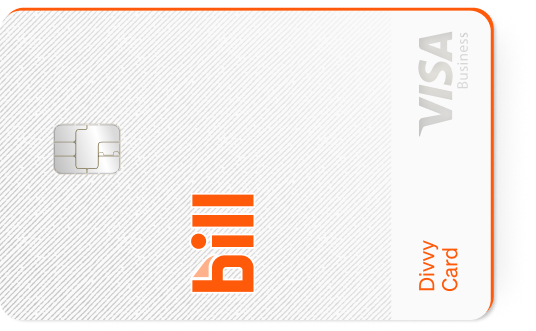Small business owners often struggle to have enough cash to cover day-to-day expenses. But there’s a problem with having too much cash in your bank account, too.
So what’s the balance? How much cash should your business have available?
What does it mean to have cash on hand?
Having “cash on hand” refers to the cash reserves you can easily access. That could be cash in a box in your office that you use for petty cash or the money in your checking account that you could easily withdraw.
This cash can come from your cash inflow, which refers to any money coming into your business, whether that’s from clients paying invoices, a loan, or money you’ve provided yourself to fund your business.
Let’s find the right loan for your business
Nav serves nearly every kind of business, and our experts will match you to the right fit for your business needs.
Why every small business should have cash on hand
It’s important to have cash flow and cash on hand so your business can operate smoothly. In addition to cash inflows, you also have cash outflows, which are all the things you spend money on in your business, including paying vendors, rent, utilities, and inventory. You need cash on hand to cover those expenses.
If yours is a seasonal business, cash flow may be unsteady. You may primarily operate in the summer, and the rest of the year, you may have little to no money coming in. These months, it’s especially important to have access to cash to operate.
And then there’s the ever-changing economy. Should your sales plummet, do you have enough money to cover expenses until things get better?
Determining how much cash your business needs
So how much should you have on hand? It depends on your business’ cash needs. Start by looking at your normal operating expenses. These include what I mentioned above: rent, utilities, inventory, supplies, software subscriptions, et cetera.
Startups may have higher expenses, especially at the beginning.
Some of these expenses can be paid with means other than cash, so consider which you could pay with a credit card.
Now consider the future. Will your expenses stay the same or increase? Forecasting future costs by calculating your cash flow projection will help you understand how much cash you need to have on hand down the road.
While there’s no hard and fast rule about how much cash you should have available, generally the rule of thumb is to keep three to six months’ worth of cash on hand.
How to increase cash on hand
If your expenditures are exceeding your income, it’s time to figure out how your business can keep up with the increasing financial demand. Here are some strategies to find a little extra cash.
Spend less cash
It’s simple. If you want more cash on hand, lower your expenses. Find ways to cut corners. Review all your expenses and determine which are unnecessary (particularly recurring subscriptions for software you may no longer use).
Increase revenue
You can do this in several ways. You can raise your prices, sell existing customers on additional products, or offer additional products or services. The more revenue you generate, the higher your cash balances.
Lower your expenses
If you purchase inventory or materials from a supplier, do some research to see if you can find a better price. This will lower your costs and increase cash on hand.
How much cash is too much?
It might seem strange to say, but excess cash on hand can be a bad thing. First, if it’s sitting in your checking account, it’s not earning interest. If you don’t need it, consider moving it to a savings account.
Second, having access to a large amount of cash can be tempting to spend. Suddenly you’re eyeing that $500 office chair you don’t really need!
If your cash flow statement shows a high amount of cash on hand, that’s money that’s not being reinvested into your business.
So how much is too much? Anything over that three to six months’ worth. If you have more, consider the best way you can invest the funds back into your business.
Other options for a financial safety net
Maybe having too much cash on hand isn’t your problem. Maybe you don’t even have enough cash to pay your expenses. In that case, you have options that can provide a safety net.
You can take out small business loans, which can include bank loans, SBA loans, and short-term loans, depending on what you qualify for. Here are some options to consider:
Intermediate-Term Loan by Kapitus
Great for established businesses looking for large capital amounts.
Pros
- Repayment term of 2-6 years for those who qualify
- Favorable payment plans for businesses with $250k+ annual revenue
- Specialty loan programs for medical practices.
Cons
- Some repayment structures require weekly payments
- Favorable terms for 3+ years time in business.
Funding Amount
Cost
Repayment Terms
Funding Speed
Line of Credit by Fundbox
Nav recommends this product as a great solution for newer small businesses looking for a fast application process and access to a flexible LOC product. Bonus: When you click 'Apply now," we'll securely pass over your info, making applying with Fundbox a breeze. Only answer a few additional questions on their end and you're good to go.
Pros
- 625 minimum personal credit score
- No impact to credit score to apply (soft pull only)
- No draw fees
- Fast approval and funding, with funds available as soon as the next business day
- Use as much as you need, only pay interest on what you use
- Fundbox reports payment activity to all the major commercial credit bureaus via the Small Business Financial Exchange (SBFE), which can help strengthen a business's credit profile.
Cons
- Must have a business checking account with a minimum balance of $500
- May require large weekly payments (0.4% - 0.7% of the original draw amount per week) due to the short repayment duration.
Funding Amount
Cost
Repayment Terms
Funding Speed
SBA Loan by SmartBiz
For high cost projects with long repayment. No immediate funds needed.
Pros
- APR as low as 11.25% with monthly repayment plans up to 10 years
- Ability to be pre-approved and review terms and conditions before needing to provide a full list of financial documents.
Cons
- Lengthy application process (30-60 days) with lower approval odds
- Requires more documents than other Bank Loan products.
Funding Amount
Cost
Repayment Terms
Funding Speed
There are also business credit cards that can help you purchase what your business needs. Look for one with rewards so you can get perks when you spend.
One of the highest cash back rates available for small business cards.
Pros
- Attractive intro financing offer
- High rates of cash back for business spending
- No annual fee.
Cons
- No rewards bonus for initial spending
- Foreign transaction fees.
Intro APR
Purchase APR
Annual Fee
Welcome Offer
BILL Divvy Corporate Card
Eligibility based more on revenue, requires full repayments monthly.
Pros
- Free and flexible expense management platform
- No annual fee.
Cons
- No early spend bonus and lower rewards than other cards
- Must pay off all balances in full each month.
Intro APR
Purchase APR
Annual Fee
Welcome Offer
All information about the Chase Ink Business Cash℠ Credit Card has been collected independently by Nav. This card is not currently available through Nav. To see what business credit cards are available, please visit the Nav Credit Card Marketplace.
Pros
- All information about the Chase Ink Business Cash℠ Credit Card has been collected independently by Nav
- This card is not currently available through Nav
- To see what business credit cards are available, please visit the Nav Credit Card Marketplace.
Cons
- All information about the Chase Ink Business Cash℠ Credit Card has been collected independently by Nav
- This card is not currently available through Nav
- To see what business credit cards are available, please visit the Nav Credit Card Marketplace.
Intro APR
Purchase APR
Annual Fee
Welcome Offer
Your business runs on the power of cash. Staying on top of how much you have and ensuring you have enough for paying your bills should be a top priority.
100+ business credit cards in one click
Business credit cards can help you when your business needs access to cash right away. Browse your top business credit card options and apply in minutes.
Build your foundation with Nav Prime
Options for new businesses are often limited. The first years focus on building your profile and progressing.
Get the Main Street Makers newsletter
This article was published on May 3, 2025.
Rate this article
This article currently has 1 rating with an average of 5 stars.

Susan Guillory
Susan Guillory is an intuitive business coach and content magic maker. She’s written several business books and has been published on sites including Forbes, AllBusiness, and SoFi. She writes about business and personal credit, financial strategies, loans, and credit cards.






